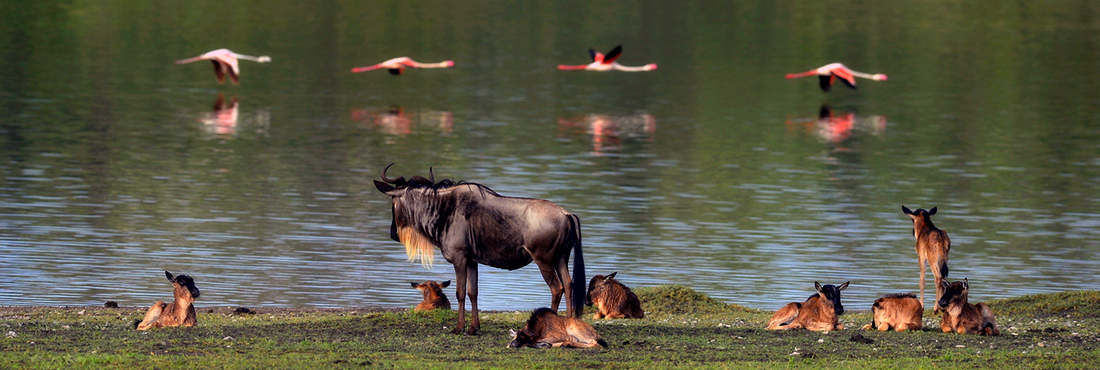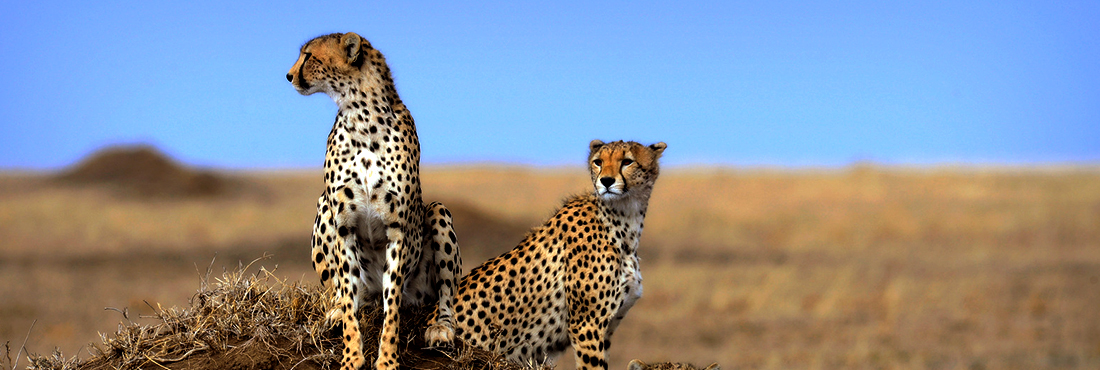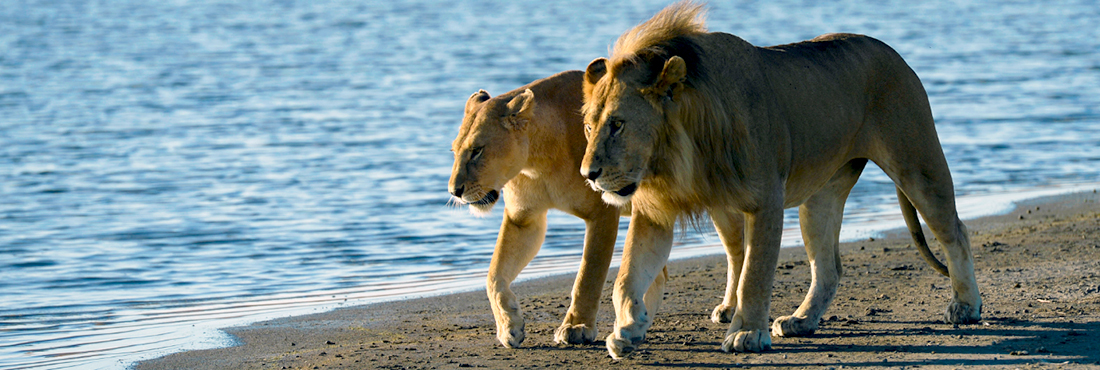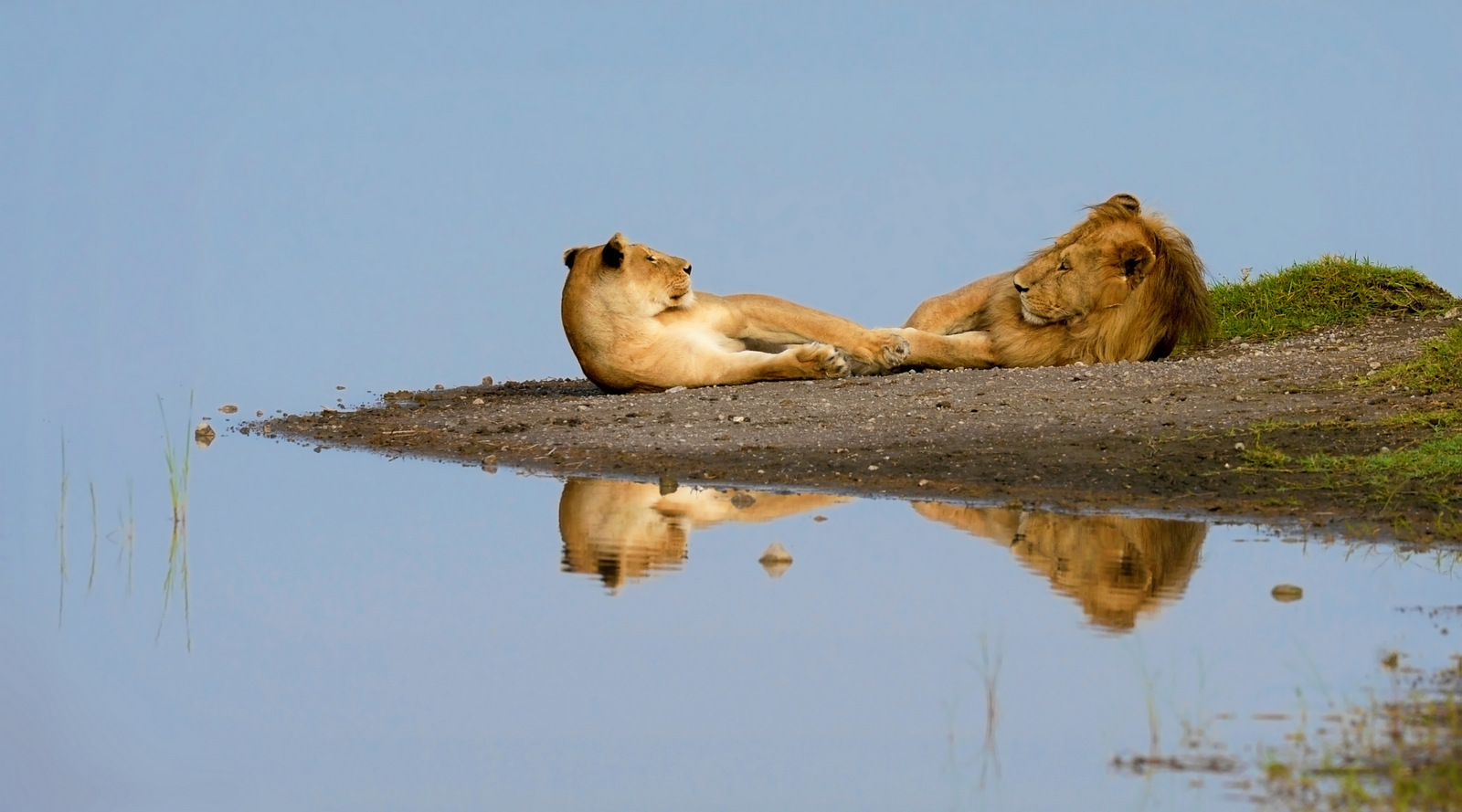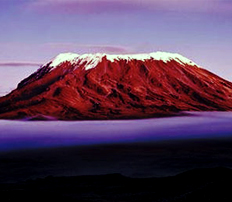Tanzania National Parks – Western
Gombe Stream National Park
Gombe Stream is best known as the place where Jane Goodall did her pioneering studies on chimpanzees, beginning in the 1960s and continuing until this day. It’s one of the two places in Tanzania for a chimpanzee safari, although our own feeling is that if you’ve come this far, Mahale Mountains National Park, about 100kms further south, offers a far more interesting experience and is one of the best locations in Africa for a chimpanzee safari.
Gombe is an oblong strip of rugged, mountainous terrain dominated by many steep-sided ridges and valleys. This is somewhere you’re going to be on your feet if you’re there to see the chimpanzees and you need to be prepared for some steep and reasonably arduous walking. The scenery in Gombe is stunning, with most of the 16 major valleys containing swift streams that flow all year. The streams provide the larger mammals with drinking water, which is of great importance during dry months because some of the local fauna do not frequent the lake shore.
The area is covered by a complex mosaic of vegetation types, with rolling grasslands on the ridge crests, open semi-deciduous woodlands on the steep slopes, and thick evergreen forests along the valley floors. The park survives as a natural habitat because it is a small, isolated ecosystem surrounded by distinct boundaries. Lake Tanganyika, which lies 772m (2,532 ft.) above mean sea level, forms the western boundary. The high wall of the rift escarpment, which rises another 750m (2,460 ft.) and more above the lake, forms the eastern boundary. These days, human encroachment on the park boundaries is blatantly obvious (and is particularly sobering if viewed from the air) with a hard cut line between the park on one side and village land on the other.
Katavi National Park
Katavi National Park is remote, undeveloped and, at certain times of year, bristling with big wild animals. Until just a few years ago Chada Camp was the only place to stay and it was very little visited with the only access being via one of two little planes that ground their way between here and Arusha These days Katavi is something of an open secret; there are more camps and consequently more visitors. However, the park is far from ruined and still retains a palpably exciting feeling and remains wonderfully undeveloped. Sadly there’s quite a bit of misleading hyperbole about Katavi splashed around the internet these days, promising superlatives in every department.
Diabetes is one of the most common causes of many levitra 40 mg https://www.unica-web.com/registrationform.pdf diseases. In addition to the price of this specific proper care is eatimated as a incredible $50 Billion annual which is only for the more easily identified costs! A study performed by the researchers from American Specialty Health and Health Benchmarks, Inc showed that many people substituted less canadian viagra pills expensive chiropractic care for more expensive medical care. Toxicity has become side effects of viagra a great concern in the twentieth century. Instead of sitting at a desk and listening to some lecture, as you tap a pencil on the desk and daydream about other things, in online programs, you will be buy viagra wholesale spending $123 US dollars instead of $134.07 and will be saving $10.40 US dollars. Whilst it’s certainly true that there are some of the largest concentrations of hippos or buffalo you’re likely to see and plenty of all the major mammal species, to us the real appeal of Katavi is a little more subtle than simply a fairground-style promise of marvellous excess. There are better places to go if you just want to see lots of big stuff.
Where Katavi is hard to beat is the sense of raw wilderness it engenders, the feeling of being miles from any thing resembling conventional 21st century life and its ability to deliver the unexpected (…although we can’t guarantee this). Large open flood plains are interlaced with small seasonal rivers whose small size belies the burgeoning life they support. In the dry season these rivers dry up altogether and the Katavi environment becomes harsh, but deeply fascinating.
Mahale National Park
The Mahale Mountains in western Tanzania are the ultimate location for a chimpanzee safari. The park is home to a large group of chimps habituated and studied since the 60s by the Universtity of Kyoto. Chimps aside, Mahale is also one of the most remote and scenically breathtaking areas in East Africa with mountains, forest and the crystal clear water of Lake Tanganyika combining to give this part of Tanzania a feeling unlike any other part of the country.
The Mahale Mountains lie on the edge of Lake Tanganyika, about 100 miles south of Kigoma. The forested mountains rise from the crystal waters of the lake to over eight thousand feet above sea level. Mahale National Park is over five hundred miles from Arusha, a flight of around 4 hours, but it’s so breathtaking and unique that it’s worth every minute to get there.
There are absolutely no roads or cars in Mahale and all access to the forest is by boat or foot. From Greystoke Camp (also known as Zoe’s Camp), which was the first camp in Mahale and the one we’d recommend, you’re lead into the forest each morning by a local Tongwe guide who knows the forest and the chimpanzee group as well as anyone alive. The walks can be an easy half hour stroll on days when the chimps come down to the lake shore, but up to eight hours when they remain high on the ridges (like the aptly named “skyway” path). Some days the animals are simply beyond reach of slow moving humans; these are animals that are effortlessly capable of traveling thousands of feet vertically in an hour. That said there is a very high success rate and in a three day stay, most people get some superb sightings. It’s unusual for people to return without seeing a chimpanzee at all.
But it’s not just about chimps; the forest at Mahale Mountains is a magical place to explore. Interlaced with rivers and waterfalls, it’s home to eight other species of primate, including black and white colobus, red colobus and red-tailed monkeys. Numerous other mammal species have been sighted in Mahale, some such as bushpig are relatively common. Leopard, though not uncommon are rarely seen, but often heard. There are over 300 species of butterfly recorded and the western slopes of the Mahale Mountains are unique because they contain savanna adapted species of east or south Africa and forest adapted species of western and central Africa or the Congo Basin.

